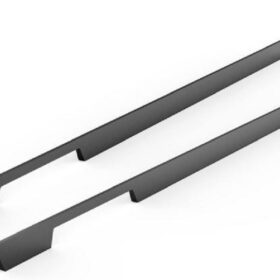Comparing Different Types of Aluminum Profiles for Kitchen Use
Aluminum profiles have become increasingly popular in kitchen design due to their durability, versatility, and aesthetic appeal. Understanding the different types of aluminum profiles available can help you make an informed decision for your kitchen project.
Extruded Aluminum Profiles
Extruded aluminum profiles are created by forcing molten aluminum through a die to create a specific shape. They offer several advantages:
Strength and durability: Extruded profiles are known for their exceptional strength and resistance to bending or warping.
Precision: The extrusion process ensures precise dimensions and a smooth finish, making installation efficient.
Variety: Extruded profiles come in a wide range of shapes and sizes, allowing for customized kitchen designs.
Rolled Aluminum Profiles
Rolled aluminum profiles are formed by rolling flat aluminum sheets into desired shapes. They have unique characteristics:
Lightweight: Rolled profiles are thinner and lighter than extruded profiles, making them suitable for applications where weight is a concern.
Flexibility: Rolled aluminum can be easily bent or curved, offering design flexibility.
Lower cost: Rolled profiles are generally less expensive than extruded profiles due to their simpler manufacturing process.
Aluminum Composite Panels (ACPs)
ACPs consist of two thin aluminum sheets bonded to a polyethylene core. They provide unique benefits:
Lightweight and durable: ACPs are lightweight yet strong, making them ideal for cabinet doors and wall cladding.
Smooth surface: ACPs have a smooth, flat surface that is easy to clean and maintain.
Wide color range: ACPs are available in a vast array of colors and finishes, allowing for personalized kitchen designs.
Considerations for Kitchen Use
When choosing aluminum profiles for kitchen use, consider the following factors:
Application: Determine the intended use of the profiles (e.g., cabinetry, countertops, backsplashes).
Durability: Kitchens can be demanding environments, so ensure the profiles are durable enough to withstand moisture, heat, and impact.
Aesthetics: Choose profiles that complement the overall kitchen design and personal preferences.
Budget: Consider the cost of the profiles and the associated fabrication costs.
Conclusion
Choosing the right aluminum profiles for your kitchen requires a careful consideration of the different types available and their specific characteristics. Extruded, rolled, and composite profiles each offer unique advantages, and the best choice depends on the specific application and kitchen design goals. By understanding the differences, you can make an informed decision that balances performance, aesthetics, and cost.
-
2024-09-14Exploring the Different Types of Modern Closet Door Pulls and Their Applications
-
2024-09-14How Cabinet Door Pull Handles Support High-Traffic Areas
-
2024-09-06Cost-Benefit Analysis of Investing in High-Quality Long Wardrobe Door Handles
-
2024-09-04How Flat Cabinet Handles Enhance Modern Interior Design
-
2024-11-29Top Trends in Modern Kitchen Cabinet Pulls for 2024
-
2024-11-28The Ultimate Guide to Modern Kitchen Cabinet Pulls- Materials, Styles, and Tips
-
2024-11-27Elevate Your Kitchen Design with These Must-Have Modern Cabinet Pulls
-
2024-11-26Sleek and Stylish- The Best Modern Kitchen Cabinet Pulls for a Contemporary Look






